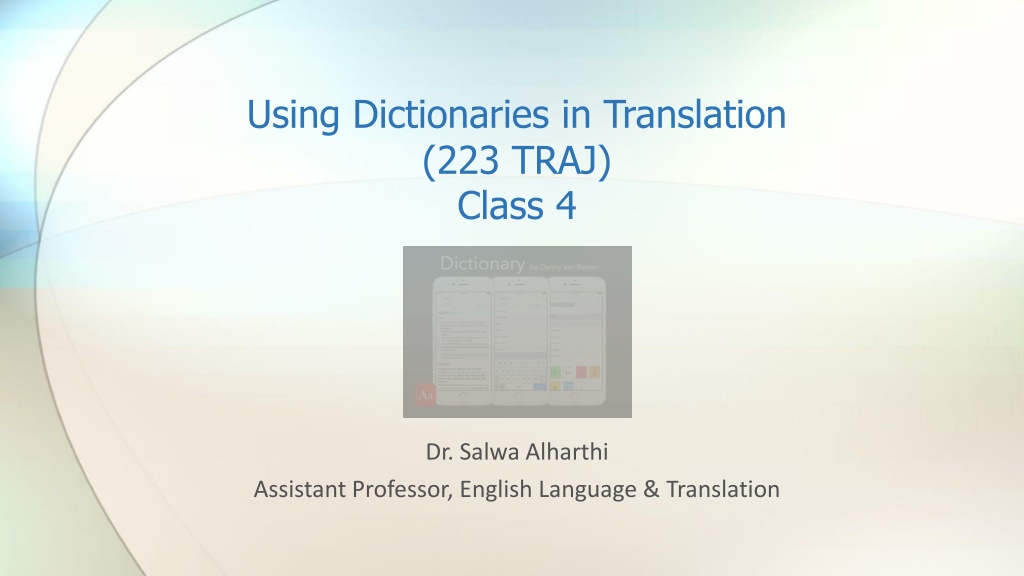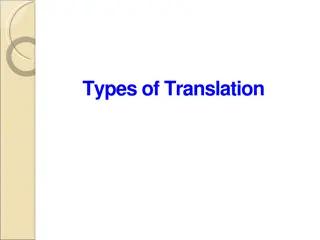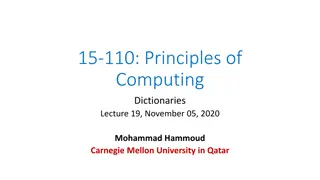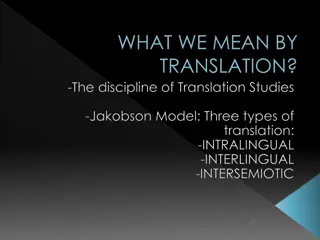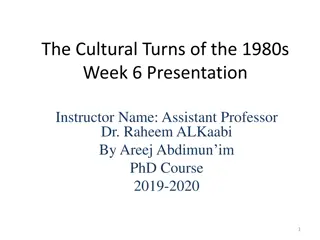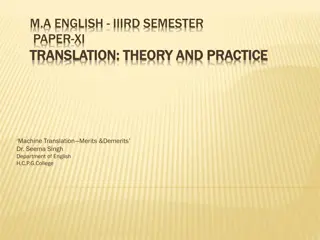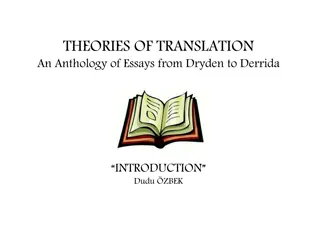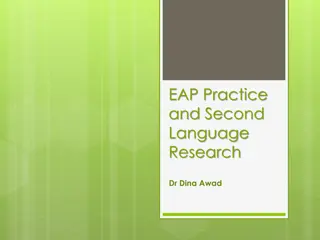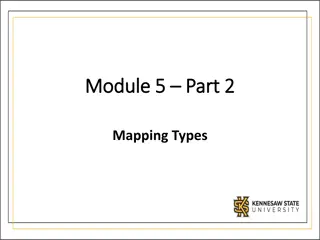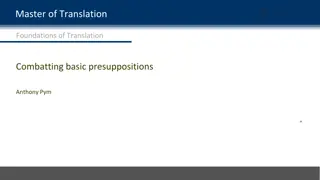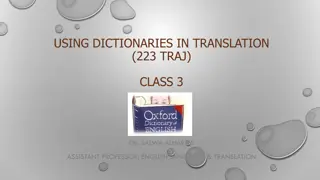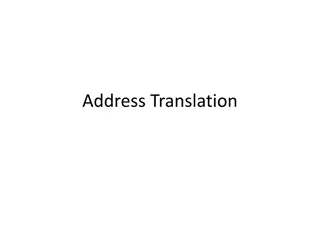Understanding the Role of Dictionaries in Translation
Dictionaries play a crucial role in translation by helping users find information about linguistic signs, word division, spelling, and word formation. The lemma serves as a representative of a lexical item in a dictionary, aiding users in locating specific entries. Word division information can assist in understanding where a word can be divided, promoting vocabulary building and production. Different types of word-division markers can be found in dictionaries, reflecting variations in spelling and word formation conventions. Overall, dictionaries facilitate efficient translation processes and linguistic comprehension.
Download Presentation

Please find below an Image/Link to download the presentation.
The content on the website is provided AS IS for your information and personal use only. It may not be sold, licensed, or shared on other websites without obtaining consent from the author. Download presentation by click this link. If you encounter any issues during the download, it is possible that the publisher has removed the file from their server.
E N D
Presentation Transcript
Using Dictionaries in Translation (223 TRAJ) Class 4 Dr. Salwa Alharthi Assistant Professor, English Language & Translation
The Lemma The lemma functions as a representative of a linguistic sign; in a dictionary it represents the lexical item described in the individual dictionary entry. In a dictionary having an alphabetical macrostructure, the lemma also has the function of determining the position of the entry in the lemma list. The lemma helps users to find the information provided about the lemma sign. In some cases the information is given as a cross reference to another lemma.
What is actually a WORD A word is a group of characters placed together with spaces or punctuation marks before or after. But what about an expression like: air mail Is it two words? Is airline one word What about air-bed The user will have to look in two or three different places in the dictionary to find the word as the user cannot know in advance whether a word like air mail is entered under air or under mail.
Spelling and word division Spelling is one of the most frequent reasons for consulting a dictionary. Information about spelling is conveyed by the lemma. A user who is not sure about the spelling of a certain word may need help to find the right entry in the dictionary. In electronic dictionaries, there is no need to search in various places in order to find the correct spelling since the dictionary automatically displays a list of suggestions if an incorrect or incomplete spelling is given.
Word division Information about word division may serve different purposes. In most cases it is a matter of showing where the word can be divided at the end of a line of writing (orthographic word division), but there are also cases where word division is concerned with not only with orthography but with word formation as well. Word division information is useful in L1 dictionaries as they are intended for production. Word division information may promote vocabulary building.
Types of word-division marker: Dictionaries do not always agree on the position of word-division points. For example, in English there is a disagreement not only between British and American dictionaries, but also between different British dictionaries (e.g. cap i tal i za tion)
Pronunciation The need for pronunciation information in dictionaries varies between languages. In Finnish, there is a complete one -to-one correspondence between spelling and pronunciation and the stress is always on the first syllable. The pronunciation of English is very little in agreement with the spelling. The need for pronunciation information varies between different types of dictionaries. Pronunciation is usually shown in monolingual dictionaries. In L1 (object language is the user s native language)dictionaries, pronunciation information is needed only for words that may cause difficulties. In L2 (object language is not the user s native language) dictionaries, pronunciation must be shown for all words.
Types of pronunciation information Which sounds occur? What is the length of the sounds? What is the position of the stress? What is the tone used? This information is conveyed to the user in two main types: Visually, by means of written characters on a book page or a computer screen. Auditorily, this feature is offered by some electronic dictionaries.
Equivalents The purpose of the bilingual dictionary is to provide lexical items in one language (the source language) with counterparts (equivalents) in another language (the target language) that are as near as possible with regard to meaning and usage. In bilingual lexicography, there are certain restriction and problems originating from the differences between the two linguistic systems.
Different concept formation in different languages The conceptual world evolves differently in different languages as a result of cultural and other differences between the areas where the languages are used. The number of concepts within a certain conceptual field may differ (e.g. in the Eskimo language, there is a large stock of concepts relating to snow whileArabic has a wide range of concepts relating to camels).
Snow Terms Artificial Snow: Snow manufactured by snow cannons or guns, which create tiny granules like hair or grits. These machines are becoming cheaper with increased technology. Ball Bearings: Little firm balls of snow that form around or under skis. Blowing Snow: Grounded snow that has been moved around by the wind. Blue: Clear ice, the ground is visible underneath it. Breakable Crust: The top is frozen solid, but underneath there is soft powder. Brown Snow: Mud showing through, often during springtime. Bulletproof: White, but so densely packed it is hard to put dents through it. California Concrete: Heavy wet snow that is created by a Pacific storm. Chokable: Powder that is so fine and deep you could drown or "choke." Chop: Freshly fallen powder that has been skied on enough to be chopped up, but there are few bumps. Chopped Powder: Powder snow that has been "cut up" by other skiers/snowboarders. Chowder: Heavy, wet, lumpy snow. Colorado Super Chunk: Heavy wet snow about two days after a spring storm. Cornice: A formation of windblown snow, also known as an overhang. It is important to recognize cornice in alpine skiing and climbing because it is often unstable and hard to see from the windward side.
: : . . . . . : : : : : . : : : : ( : : : : : : . . . . . . : : : . . . . . . . : : . ) . . : : .
